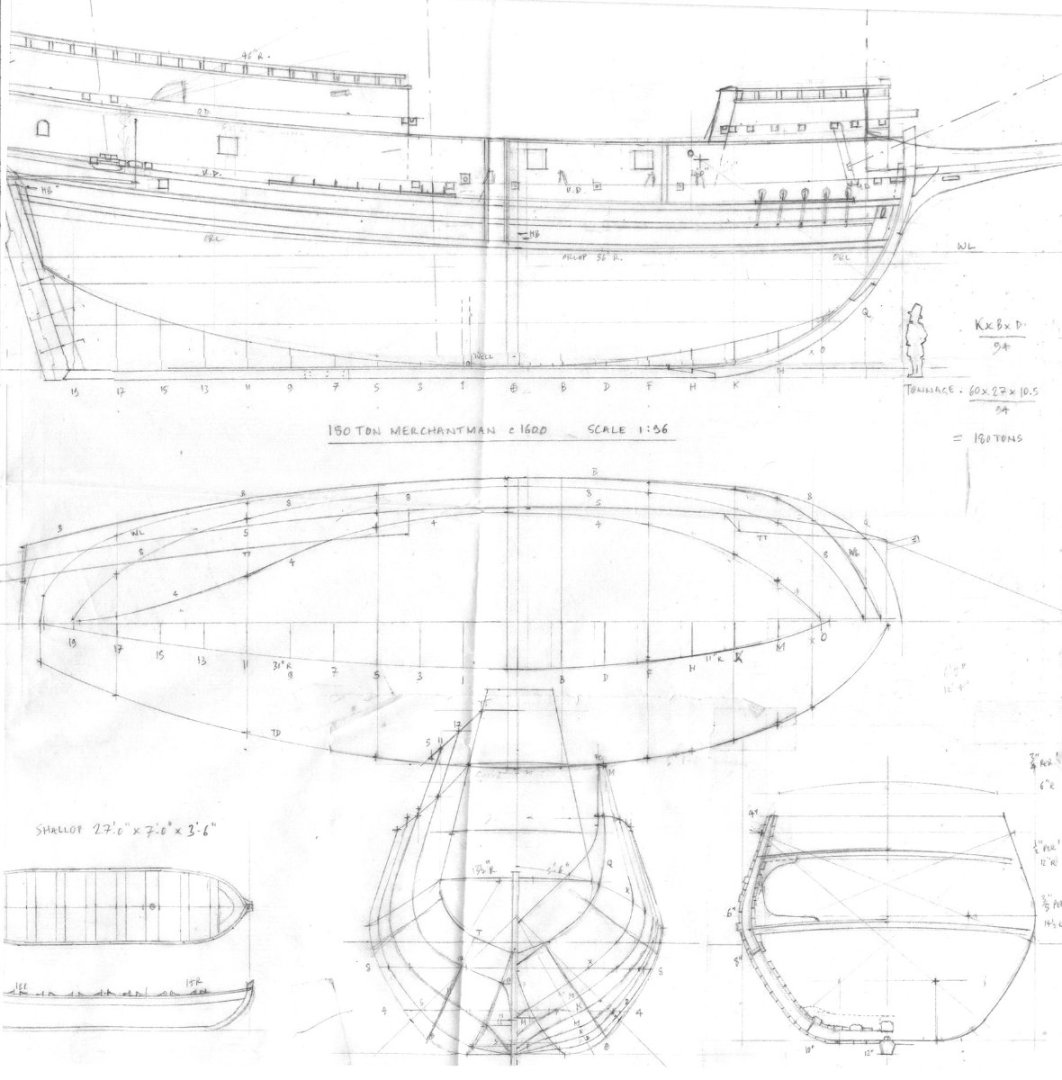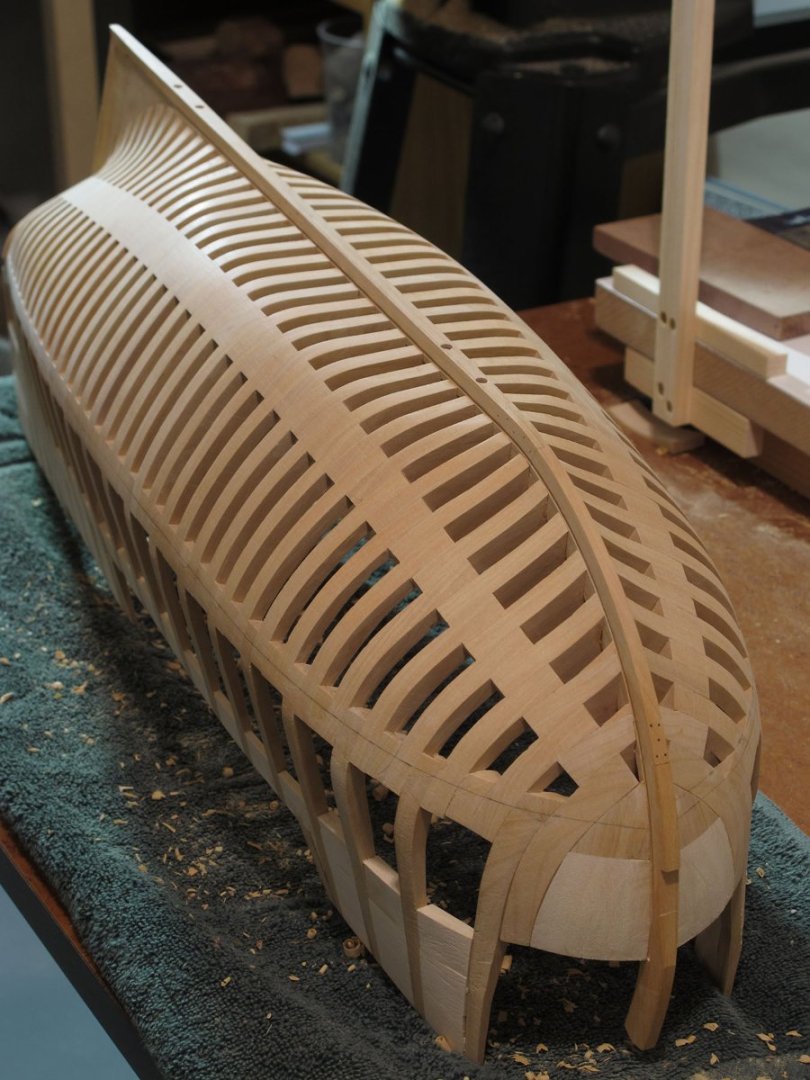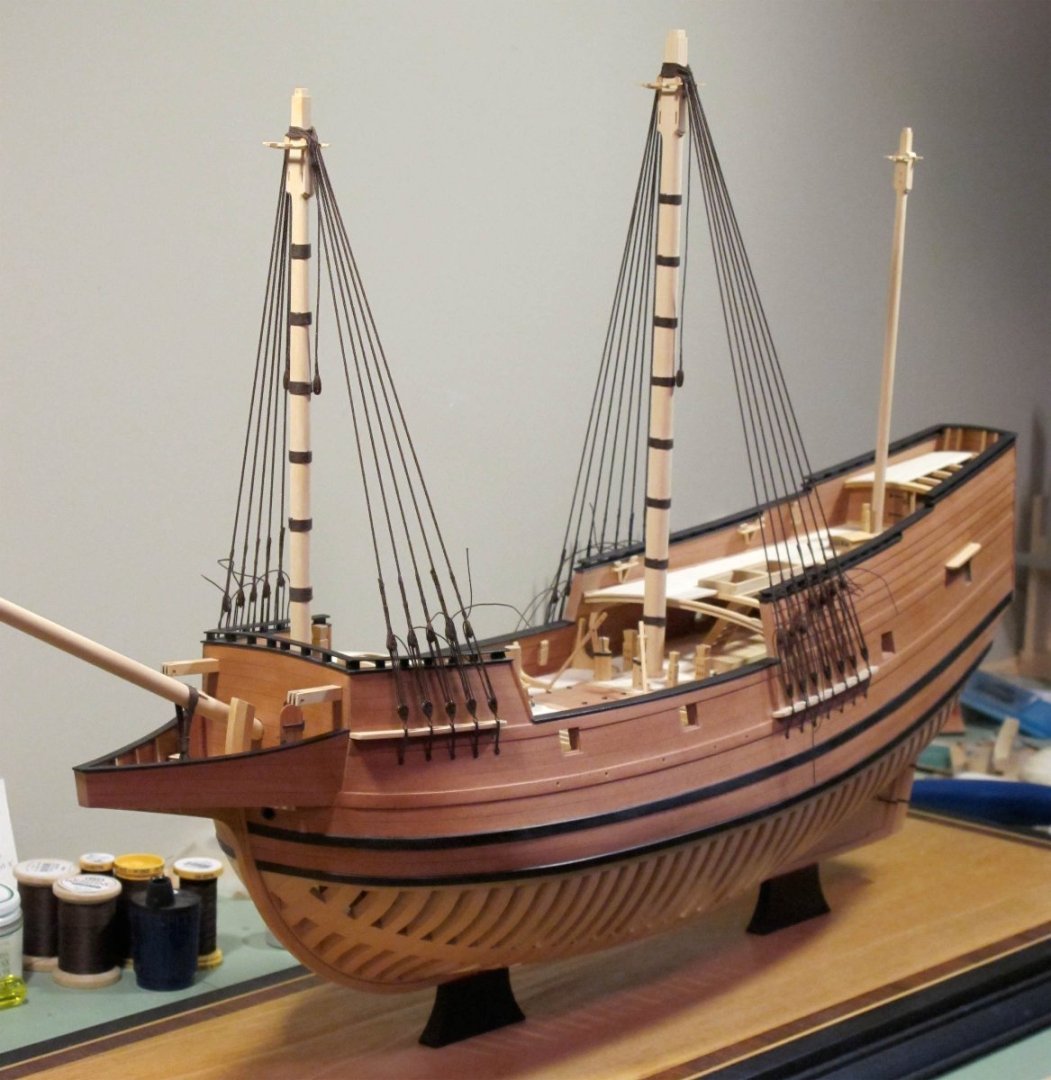-
Posts
13,299 -
Joined
-
Last visited
Content Type
Profiles
Forums
Gallery
Events
Everything posted by druxey
-

William Sutherland's concept of ship hull design, 1711
druxey replied to Waldemar's topic in Nautical/Naval History
An interesting comparison! -
Yes, this kind of hull needs a lot of 'prep' before painting. Coming along nicely.
- 111 replies
-
- Nonsuch 30
- Model Shipways
-
(and 1 more)
Tagged with:
-

William Sutherland's concept of ship hull design, 1711
druxey replied to Waldemar's topic in Nautical/Naval History
No, I think you misunderstood my statement: the joint lines run along junctions of the different arcs. There is no period work (that has yet been uncovered) describing the application of the cono-cuneus curve in the lower part of the hull. Pett was recorded as going to write about this, but he died before he could reveal his 'shipwright's secrets'. These were recently rediscovered by reverse engineering from the 3D scans of a contemporary model. -

William Sutherland's concept of ship hull design, 1711
druxey replied to Waldemar's topic in Nautical/Naval History
No, conoidal hulls were not a novelty by 1600, but in the 1660's the cono-cuneus curve used to develop the lower hull below the conoid was. And, I can assure you, I used the Newton ms to develop the draught that I posted. -

William Sutherland's concept of ship hull design, 1711
druxey replied to Waldemar's topic in Nautical/Naval History
Yes, Waldemar, The draught for a 180 ton merchant vessel was first constructed at 1:96 using the 'Propositions'. You can see the first iteration of the draught. This was based on a 60' 0" keel to the touch, 27' 0" breadth and 10' 6" depth of hold. The model was built at 1:48. The midships floor has no deadrise, but is flat. Changes in radii were later adjusted to occur at the joint lines. -
A nice idea of presentation! Hope it turns out the way you visualize it, Ron.
- 542 replies
-
- Sphinx
- Vanguard Models
-
(and 3 more)
Tagged with:
-

William Sutherland's concept of ship hull design, 1711
druxey replied to Waldemar's topic in Nautical/Naval History
Here are photos of a merchantman's hull, as derived by graphic methods, from the Newton manuscript. Comments? -

a drafting tool or paper weight
druxey replied to garyshipwright's topic in Modeling tools and Workshop Equipment
Usually a number of them hold a flexible curve or batten in place on the drawing board. Sometimes they were referred to as 'whales', I believe. -
You could always 'bash' the figures' poses....
- 542 replies
-
- Sphinx
- Vanguard Models
-
(and 3 more)
Tagged with:
-
Check: https://minitaps.com/brands/MiniTaps.html
-

William Sutherland's concept of ship hull design, 1711
druxey replied to Waldemar's topic in Nautical/Naval History
Haven't seen this draught before. The sections are interesting. Thanks for this, Martes. -
Sideways is always good, in case one forgets to back off or wishes to keep the same setting.
-

William Sutherland's concept of ship hull design, 1711
druxey replied to Waldemar's topic in Nautical/Naval History
Respectfully, Waldemar, I'm not sure that I agree with your suggestion that ships, as built, varied in shape from the draught other than by perhaps an inch or so. If one plots out proof diagonals, they usually produce a nice smooth, faired line. Here I'm talking about British draughts, as I've not extensively studied Continental ones.
About us
Modelshipworld - Advancing Ship Modeling through Research
SSL Secured
Your security is important for us so this Website is SSL-Secured
NRG Mailing Address
Nautical Research Guild
237 South Lincoln Street
Westmont IL, 60559-1917
Model Ship World ® and the MSW logo are Registered Trademarks, and belong to the Nautical Research Guild (United States Patent and Trademark Office: No. 6,929,264 & No. 6,929,274, registered Dec. 20, 2022)
Helpful Links
About the NRG
If you enjoy building ship models that are historically accurate as well as beautiful, then The Nautical Research Guild (NRG) is just right for you.
The Guild is a non-profit educational organization whose mission is to “Advance Ship Modeling Through Research”. We provide support to our members in their efforts to raise the quality of their model ships.
The Nautical Research Guild has published our world-renowned quarterly magazine, The Nautical Research Journal, since 1955. The pages of the Journal are full of articles by accomplished ship modelers who show you how they create those exquisite details on their models, and by maritime historians who show you the correct details to build. The Journal is available in both print and digital editions. Go to the NRG web site (www.thenrg.org) to download a complimentary digital copy of the Journal. The NRG also publishes plan sets, books and compilations of back issues of the Journal and the former Ships in Scale and Model Ship Builder magazines.






